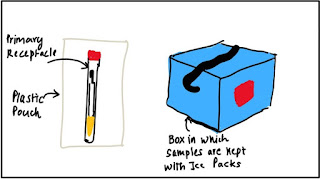Mechanical Ventilation- Physiology
Non-Invasive Ventilation is of two types:
CPAP = Continuous Positive Airway Pressure: where continuous pressure is exerted during inspiration and expiration
BiPAP = Bilevel Positive Airway Pressure: where higher pressures are applied during inspiration and lower pressures during expiration
Use of CPAP 🡪increases intra-thoracic pressure 🡪 decreases Venous Return (VR) 🡪 decreased Right Ventricular (RV) preload.
PEEP > CVP 🡪 Preload decreases
PEEP > PAP 🡪 Afterload decreases (where PEEP = Positive end expiratory pressure, CVP = Central venous Pressure, PAP = Pulmonary arterial pressure)
Cardiac Transmural Pressure = pressure difference between inside of the heart and intrathoracic pressure. When CPAP is given, intrathoracic pressure increases 🡪 transmural pressure decreases 🡪Afterload decreases
CPAP: Increases inspiratory flow 🡪 Increases Tidal Volume (TV) 🡪 helps in unloading the inspiratory muscles to decrease work of breathing 🡪decrease dyspnea
Increase in expiratory pressure (like with CPAP) in patients with COPD helps in increasing ventilation and oxygenation. This might seem contradictory (how does increased pressure from the ventilator into the lungs during expiration help in increasing ventilation. It seems counter intuitive!). In order to understand this, think about how PURSED LIP breathing in COPD patients actually help them to breathe better!
COPD patients need an additional external PEEP in addition to inspiratory support to improve diaphragmatic function.
PRE-OXYGENATION: with 100% O2 for at least 3 minutes helps to prolong the apnea time (Apnea time = time to reach 88 to 90% SpO2). The FRC (functional residual capacity) is the reservoir during the period of apnea.
LUNG INFLATION
Moderate inflation: pulmonary stretch receptors reduce vagal stimulation 🡪 moderate tachycardia
Hyperinflation: Stimulates Pulmonary C and J receptors 🡪 increased vagal signaling 🡪 bradycardia
LUNG PROTECTIVE VENTILATION
- Low Tidal Volume
- High PEEP (to keep lungs open, prevent alveolar collapse)
- Low plateau Pressure
Esophageal Balloon: Can help in measuring pressures to deliver adequate PEEP and TV.
AUTO PEEP
-Auto PEEP is the difference between alveolar pressure and the pressure at the proximal airway.
-At the exact end of expiration, ideally, we expect the pressure in the alveoli to be zero as all air should have exited from the alveoli. But when some gas is retained, it leads to the development of Auto PEEP.
-Auto PEEP is measured by end expiratory hold maneuverer.
-If elastic forces are high and resistive forces (eg resistance in bronchi etc) are low, auto PEEP is minimal or absent.
-Increase in resistive forces 🡪 passive exhalation time increases to ensure complete emptying of expiratory tidal volume.
TIME CONSTANT:
-Time required for lungs to expire 63% of initial volume during expiration.
-So total of 3 time constants would be needed to exhale 96% of TV out.
-So, if we keep Inspiratory: Expiratory time as 1:3, Auto PEEP would not occur.
-Diseases lung is inhomogeneous and can have different time constants for different parts 🡪 Expiratory flow limitation.
-Flow limitation = dynamic condition that occurs when gas flow cannot be increased by increasing alveolar pressure or reducing airway opening pressure.
Dynamic hyperinflation is not the same as air trapping
-In Asthma, inspiratory activity continues into early expiration 🡪 dynamic hyperinflation, without air trapping
-In Recumbent obese patients, air trapping occurs without dynamic hyperinflation.
TRACHEOSTOMY
-Increased risk of infection as compared to Endotracheal Tube (ET) because:
1. Lack of humidification
2. Absence of cough, hence decreased clearance of secretions
3. Reduced ciliary function
-Reduced work of breathing as compared to ET because:
Tracheostomy tubes are smaller, more rigid 🡪 less turbulent airflow 🡪 reduces expiratory flow limitation, dynamic hyperinflation, auto-PEEP 🡪 reducing work of breathing
















